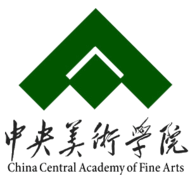China Central Academy of Fine Arts
| 中央美术学院 | |
 | |
Former names | National Beijing Art College[1] |
|---|---|
| Type | Public |
| Established | 1918 |
| President | Fan Di'an (范迪安) |
| Party Secretary | Gao Hong (高洪) |
Academic staff | 572 |
| Students | 4,700 |
| Location | Chaoyang District, Beijing, China |
| Campus | Urban, 33 ha (82 acres) |
| Website | www.cafa.edu.cn |
| China Central Academy of Fine Arts | |||||||||||||||||||
| Simplified Chinese | 中央美术学院 | ||||||||||||||||||
|---|---|---|---|---|---|---|---|---|---|---|---|---|---|---|---|---|---|---|---|
| Traditional Chinese | 中央美術學院 | ||||||||||||||||||
| |||||||||||||||||||
The Central Academy of Fine Arts or CAFA is an art academy under the direct charge of the Ministry of Education of China. The Manila Bulletin calls the school "China’s most prestigious and renowned art academy".[2] It is one of the most selective schools in the country and turns away more than 90% of its applicants each year.[3]
Overview
The history of "National Art School in Beiping" (国立北平艺术专科学校) might date back to the founding of "National School of Fine Arts in Beijing" in 1918, advocated by the notable educator, Cai Yuanpei. It was the first national school of fine arts in Chinese history, and also the beginning of Chinese modern education of fine arts. The academy was founded in April 1950, as a result of merger between National Art School in Beiping and the department of fine arts at third campus of North China University. Mao Zedong wrote the school name. The former principals of CAFA include Xu Beihong, Jiang Feng, Wu Zuoren, Gu Yuan and Jin Shangyi. Current president is the painter and historian of fine arts, Prof. Pan Gongkai. Current Vice President is renowned contemporary artist, Xu Bing. Current secretary of CPC's committee is Yang Li. Current director of academic commission is the oil painter Jin Shangyi.
The academy comprises six specialty schools: School of Fine Art, School of Chinese Painting, School of Design, School of Architecture, School of Humanities, and School of Urban Design. A post-graduate education school and a high school of fine arts are also affiliated. There are 534 teachers and staffs for 3,800 undergraduate and graduate students, and over 100 international students at school. Its museum of fine arts boasts precious collections, including more than 2,000 Chinese scroll paintings since Ming Dynasty. CAFA edits, publishes and distributes two national first-class academic magazines, "Fine Arts Study" and "Fine Arts of the World".
The design programme of CAFA was renewed in 1995 in the name of the Department of Art Design, after a break of some forty years, and became the School of Design in October, 2002. with the goal of preparing and training the students as future professionals in design with creative thinking and practical capabilities, the School of Design offers undergraduate, graduate and Ph.D. degrees in programs ranging from visual communication design, product design, fashion design, photography, digital media to design theory and history. The School of Design plays an important role in promoting design in China and is intensively involved in design activities, most noticeable of which are its designs for the 2008 Beijing Olympics.
The new CAFA Art Museum, designed by Japanese architect Arata Isozaki, is located at the northeast corner of CAFA campus at No.8, Huajiadi Nan Street, Wangjing, covering an area of 3546 m2, with total floor area of 14 777 m2. The Museum opened in October 2008, for the University's 90th anniversary. The new, six-floor museum has several notable collections, including over 2,000 historic Chinese scroll paintings dating to the Ming Dynasty. The museum hosts rotating exhibitions. Tickets are 10 RMB.
The school drew media attention during the Tiananmen Square protests of 1989, during which the students protested by creating a large statue, called the Goddess of Democracy.[4] Each of the eight art academies signed a statement explaining the purpose of the statue.[5]
Notable alumni
- Jin Shangyi[6]
- Zhang Huan
- Fang Lijun
- Hung Liu
- He Chengyao
- Old Xian
- Chen Man
See also
References
- ↑ "About CAFA". Official website of Central Academy of Fine Arts. Retrieved 10 June 2015.
- ↑ Casin, Pam (17 January 2011). "Zhou Jun and his dancing brushstrokes". The Manila Bulletin. Retrieved 26 January 2011.
- ↑
- ↑ Tsao Tsing-yuan (1994). Jeffrey N. Wasserstrom and Elizabeth J. Perry, ed. Essay "The Birth of the Goddess of Democracy" from Popular Protest and Political Culture in Modern China. Boulder, Col.: Westview Press. pp. 140–7.
- ↑ Minzhu Han (1990). Cries For Democracy: Writings and Speeches from the 1989 Chinese Democracy Movement. Oxford, England: Princeton University Press.
- ↑ "Zhang Dali".
External links
| Wikimedia Commons has media related to China Central Academy of Fine Arts. |